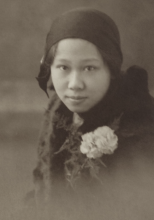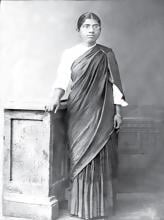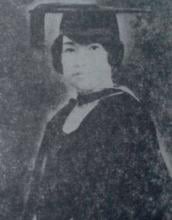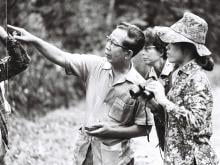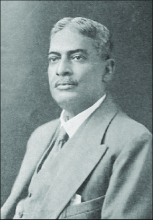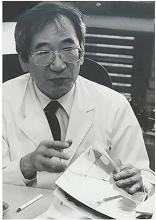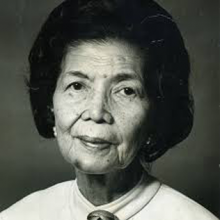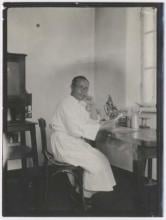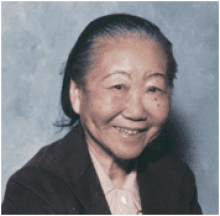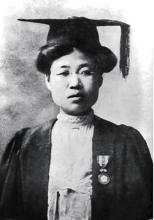Medicine
News
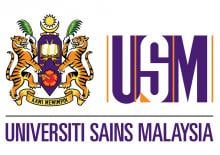
28 Apr 2008
With cooperation with the Australian Cranio-Maxillo Facial Foundation, University Science Malaysia (USM) offers hope to local patients with facial and skull deformities.

27 Apr 2008
Summaries of newsworthy papers include Fast ice flow on water?, THC meets its rival, Methyl modifications spread out, A rogue neighbourhood, Breast cancer risk variants, Inflammatory bowel diseases share genetic risk factors, Sequencing sheds light on the cancer genome, Let there be light, Visualizing neuronal activity in 3D

23 Apr 2008
Papayas are not just exotic fruits with nutritional and medicinal benefits, they are also model plants for studying genetics and evolution. Summaries of newsworthy papers include Beetle key to carbon switch, Test-tube recipe makes functioning heart cells, Linking events across a key climate transition and more

23 Apr 2008
In Nature China this week - In Nanjing, a 52-year-old father has caught the same strain of avian influenza virus that killed his 24-year-old son

20 Apr 2008
Summaries of newsworthy papers include Plant genetics: Evolution provides a cleanser for polluted soils, Greenhouse effect from tropospheric ozone and Back-to-front West Nile vaccine

16 Apr 2008
The genomic sequences of more than a thousand influenza virus isolates are analysed in research published online in Nature this week. The results suggest a model in which new lineages arise from the tropics and move towards more temperate regions, and the work will have implications for selection of viruses for vaccine programmes.

16 Apr 2008
Summaries of newsworthy papers include Why fishing magnifies fluctuations in fish abundance, Measuring a fractional electron charge, Helping the immune system, An ancient record of methane emissions, Raising the 'anti' and Sequencing gets personal

16 Apr 2008
In Nature China this week, transgenic rice has been genetically modified with specific herbicide intolerance, which can be used to control its spread and more

13 Apr 2008
Preserving the longstanding educational philosophy of the Kyoritsu University of Pharmacy, Keio University will work together to establish a new comprehensive model of pharmacy education, research, social contribution and international cooperation for the future of Japan and the world.

13 Apr 2008
Summaries of newsworthy papers including: Freezing the Eocene greenhouse, Frequency-tunable terahertz metamaterials, Decisions occur before awareness, ‘What’ and ‘where’ in auditory cortex, Arsenic action on leukaemia, Surgery on a microchip

09 Apr 2008
In January, Nature launched a survey into readers’ use of cognition-enhancing drugs. The hotly anticipated results are now published – and there are some surprises.

09 Apr 2008
Summaries of newsworthy papers include Tracing gases over the pristine Amazon forest,
Nanotechnology: Extraordinary light, New mode of pathogen attack revealed?, A new route to ferroelectricity and Heat flow: A counterintuitive phenomenon

09 Apr 2008
In this week's Nature China - Active compounds found in bitter melon have potential to treat diabetes, Satellite images show that the Indian Ocean tsunami had a long-lasting impact on sediments in the Bay of Bengal, The wild population of rare orchids is increasing in China's tropical nature reserves and more
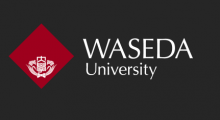
08 Apr 2008
The two universities conduct collaborative researches in a broad range of fields, including organ transplantation, regenerative medicine, medical robotics, and genetic diagnosis technology.
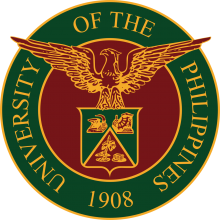
08 Apr 2008
A study by researchers from the University of the Philippines Diliman and the Nihon University in Tokyo, Japan, shows that age, gender, place of residence, and health status/behavior indicators significantly affect future health and mortality of older people, ages 50 and above, in the Philippines.

06 Apr 2008
Summaries of newsworthy papers including: Host-to-graft disease spread in Parkinson disease?, Common genetic variants influencing adult height and p53 hampers energy metabolism in cancer cells.

02 Apr 2008
Summaries of newsworthy papers include IPCC underestimates challenge of global warming, Moving in on drug resistance, Another core bites the dust, Route to thwarting skin cancer stem cells?, Superinsulators and superconductors, In pole position and Insight into short-term information storage

02 Apr 2008
Scientists in Hong Kong have established a molecular link between elevated adenosine levels and airway inflammation, which can lead to serious lung diseases
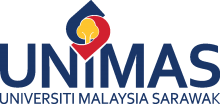
02 Apr 2008
Participation is welcomed to the 1st Biennial International Evidence-Based Nursing Conference which will be held at the Crowne Plaza Riverside in Kuching, Sarawak, Malaysia from 25-28 June 2008.
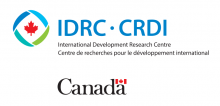
31 Mar 2008
Country studies from Burkina Faso, Zimbabwe, India, Thailand, Mexico, and Colombia discuss lessons learned and identify policy measures for safeguarding the health sector.

31 Mar 2008
After Vietnam, the term Post Traumatic Stress Disorder entered into our vocabularies...yet violent conflict affects not only the individual, but also whole societal structures

30 Mar 2008
Summaries of newsworthy papers include Inside view of magnetic fields, Tape tearing provides materials insight, RNA Trojan horses zero in on liver cirrhosis, A new therapy for cystic fibrosis, New genetic risk factors for type 2 diabetes and Colorectal cancer risk variants

26 Mar 2008
The present invention enables manufacturing of a small-sized generator battery which is harmless to the human body when swallowed and can supply electrical power for an extended period, thereby allowing a physician to perform more precise endoscopic inspection.

26 Mar 2008
Summaries of newsworthy papers include First hominin of Western Europe, MicroRNA silencing in non-human primates, Complexity and evolution, Spinning into control, Stepwise oxygenation of the ancient ocean and Retinal cells that respond to upward motion

26 Mar 2008
Modern biochemical analysis gives an insight into how major ingredients of an ancient Chinese remedy work in harmony to treat diseases

23 Mar 2008
Summaries of newsworthy papers include Warming soot, Shedding light on the bolt-from-the-blue, Gases not to blame for mass extinction, ‘Superdense’ coding gets denser, Therapeutic cloning treats neurodegenerative disease, The best of both worlds and How synaptic activity protects neurons

21 Mar 2008
Keio University was selected as a research center for human induced pluripotent stem (iPS) cells under the project for realization of regenerative medicine by the Ministry of Education, Culture, Sports, Science and Technology.

19 Mar 2008
Summaries of newsworthy research include: More than just a drinking problem, Methane found on an extrasolar planet, Dwindling populations become even more volatile, Spring genes, Eliminating antimatter, A fresh look at the mantle, Unusual reproduction, Analysing martian meteorites and Life’s winners don’t punish others

19 Mar 2008
A vegetable-rich diet has been linked to a higher risk of obesity in Chinese people

16 Mar 2008
Summaries of newsworthy papers: Perception of depth and depth of perception, Lifeline for tumour cells can be cut, Receptor crystallization speeds up, Rocks on film, A new drug for schistosomiasis, Adapting brain and behaviour to match the environment, Reining in lethal inflammation, Damage limitation and Finding allele-specific gene expression
Researchers
Sorry, no researchers coming up for this topic.
- « first
- ‹ previous
- 1
- 2
- 3
- 4
Giants in history
Michiaki Takahashi (17 February 1928 – 16 December 2013) was a Japanese virologist who developed the first chickenpox vaccine.
Irene Ayako Uchida’s (8 April 1917 – 30 July 2013) strides to understand genetic diseases such as Down syndrome paved the way for early screening of chromosomal abnormalities in foetuses.
Baron Kitasato Shibasaburo (29 January 1856 – 13 June 1931) was a Japanese physician and bacteriologist whose work led to a new understanding of preventing and treating tetanus, diphtheria and anthrax.
Maggie Lim (5 January 1913 – November 1995) was a Singaporean physician who promoted family planning and expanded the access to clinics to improve the quality of life for mothers and children in Singapore’s early days.
By isolating soil microorganisms and studying the compounds they produce, Satoshi Omura (born 1935) discovered almost 500 organic compounds with unique properties that were produced by these microorganisms, including many new antibiotics.
The founder of the Adyar Cancer Institute in India, Muthulakshmi Reddy (30 July 1886 – 22 July 1968), fought to uplift women and girls from impoverished situations.
Chinese-American virologist and molecular biologist Flossie Wong-Staal (27 August 1946 – 8 July 2020) was the first scientist to clone HIV and determine the function of its genes.
Maharani Chakravorty (1937 – 2015) was one of India’s earliest molecular biologists whose research paved the way for advances in the treatment of bacterial and viral infections.
Archana Sharma (16 February 1932 - 14 January 2008) conducted research into plant and human genetics that expanded the understanding of both botany and human health. In relation to botany, she uncovered the means by which asexually-reproducing plants evolve into new species.
The first Thai woman to receive a degree in medicine, Margaret Lin Xavier (29 May 1898 – 6 December 1932), is best remembered for her compassion towards her less privileged patients.
In 1915, pathologist Katsusaburo Yamagiwa and his research assistant Koichi Ichikawa became the first to prove that chronic exposure to chemicals can cause cancer.
In 1915, Koichi Ichikawa along with pathologist Katsusaburo Yamagiwa became the first to prove that chronic exposure to chemicals can cause cancer.
Husband and wife team, Kimishige (3 December 1925 – 6 July 2018) and Teruko Ishizaka (28 September 1926 – 4 June 2019) discovered the antibody class Immunoglobulin E (IgE) that triggers allergic reactions. They also discovered that IgE antibodies attach to white blood cells, known as mast cells, releasing histamine, which causes allergic reactions.
Husband and wife team, Kimishige (3 December 1925 – 6 July 2018) and Teruko Ishizaka (28 September 1926 – 4 June 2019) discovered the antibody class Immunoglobulin E (IgE) that triggers allergic reactions. They also discovered that IgE antibodies attach to white blood cells, known as mast cells, releasing histamine, which causes allergic reactions.
Japanese chemist Takamine Jokichi (3 November 1854 – 22 July 1922) founded the Tokyo Artificial Fertilizer Company, where he isolated a starch-digesting enzyme (named takadiastase) from the fungus Aspergillus oryzae.
Ground-breaking cancer researcher Kamal Jayasing Ranadive (8 November 1917 – 11 April 2001) advanced the understanding of the causes of leukaemia, breast cancer and oesophageal cancer through the use of animal models. She was also among the first to recognise how susceptibility to cancer is linked to tumour-causing interactions between hormones and viruses.
The research of Filipino pharmaceutical chemist Luz Oliveros-Belardo (3 November 1906 – 12 December 1999) focussed on essential oils and other chemicals derived from native Philippine plants.
Thai physician and conservationist Boonsong Lekagul (1907 – 1992) made major contributions to the preservation of his country’s wildlife.
Indian scientist and physician Upendranath Brahmachari (19 December 1873–6 February 1946) is best known for creating a drug called Urea Stibamine, used to safely and reliably treat visceral leishmaniasis (or Kala-azar), a severe infection caused by the Leishmania parasite.
Filipino chemist and pharmacist Manuel A. Zamora (29 March 1870 – 9 July 1929) is best remembered for his discovery of the tiki-tiki formula to combat beriberi, a disease caused by Vitamin B1 deficiency.
Korean parasitologist Seung-Yull Cho (16 November 1943 – 27 January 2019) is remembered largely for his pioneering works to control infections caused by helminthic parasites and his contribution to journal publishing.
Fe Villanueva del Mundo (27 November 1911 – 6 August 2011) was a Filipina paediatrician who founded the Philippines’ first paediatric hospital.
After witnessing death and suffering as a youth in his home village during World War II, Nguyễn Tài Thu (6 April 1931 – 14 February 2021) set his sights on alleviating pain by becoming a doctor. After studying Traditional Chinese Medicine in China in the 1950s, Thu returned to Vietnam to serve in military hospitals. Eventually, he became the country’s foremost practitioner of acupuncture, a technique he first learned by inserting needles into himself.
Minoru Shirota (April 23, 1899 – March 10, 1982) was a Japanese microbiologist who invented the popular fermented drink Yakult.
Wu Lien-teh (10 March 1879 – 21 January 1960) was a Malaysian-born doctor who invented a mask that effectively suppressed disease transmission. Winning the prestigious Queen’s Scholarship enabled Wu to become the first Chinese student to study medicine at the University of Cambridge.
David T. Wong (born 1936) is a Hong Kong-born American neuroscientist who is best known for discovering the antidepressant drug fluoxetine, better known as Prozac.
Indian organic chemist Asima Chatterjee (1917 to 2006) studied the medicinal properties of plant products, especially compounds known as vinca alkaloids.
Chika Kuroda (24 March 1884 – 8 November 1968) was a Japanese chemist whose research focussed on the structures of natural pigments.
Umetaro Suzuki (7 April 1874 – 20 September 1943) was a Japanese scientist best remembered for his research on beriberi, a disease caused by vitamin B1 deficiency, characterized by limb stiffness, paralysis and pain.
Salimuzzaman Siddiqui (19 October 1897 – 14 April 1994) was an artist and chemist from Pakistan whose research focused on natural products from plants.
Barry Paw (29 August 1962 – 28 December 2017) was a biologist and oncologist who discovered several novel genes and their functions in red blood cells.
Syed Qasim Mehdi (13 February 1941 – 28 September 2016) was a Pakistani molecular biologist who was a founding member of the Human Genome Diversity Project (HGDP), which assessed human diversity by studying human migration, mutation rates, relationships between different populations, genes involved in height and selective pressure.
Tsai-Fan Yu (1911 – 2 March 2007) was a Chinese-American physician and researcher who was the first female full professor at Mount Sinai School of Medicine. She discovered that gout, a condition characterized by the painful inflammation of joints, was caused by elevated levels of uric acid in the bloodstream.
Min Chueh Chang (10 October 1908 – 5 June 1991) was a Chinese-American biologist who studied fertilization in mammalian reproduction.
A Japanese surgeon, Tetsuzo Akutsu (20 August 1922 – 9 August 2007) built the first artificial heart capable of keeping an animal alive.
Ogino Ginko (3 March 1851 – 23 June 1913) was the first registered female doctor to practise modern medicine in Japan.
Esther Park (1877-1910), born Kim Jeom-dong, was the first female Korean physician to practise modern medicine in Korea and trained the first generation of Korean female doctors.





